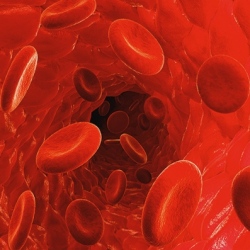
Researchers have discovered what appear to be the remnants of red blood cells and tissue in 75 million-year-old dinosaur fossils. The work could shine a light on long-standing questions about dinosaur physiology, including whether specific species were warm- or cold-blooded. Chemical analysis revealed similarities between blood cells from fossils and those from living emu.
Examining part of a fossilised dinosaur claw, the Imperial College London researchers identified tiny ovoid structures with an inner denser core that resembled red blood cells. And in another fossil fragment, they found fibrous features with a banded structure similar to that seen in modern-day collagen – found in the tendons, skin and ligaments of animals.
It’s not the first time such remnants have been found in dinosaur fossils, but co-author Susannah Maidment told BBC News: "All of the previous reports of original components of soft tissues in dinosaur fossils have tended to be in specimens that are really exceptionally preserved – one-offs, really, that require special pleading to explain how they got preserved."
The chemical profile of the blood cells looked very similar to that obtained from the red blood cells of an emu, which, like all birds, is a direct descendent of dinosaurs. "There’s an extremely well-known relationship within individual vertebrate groups that the smaller the red blood cell, the faster the metabolic rate,"
"Animals with fast metabolic rates will tend to be warm blooded, while animals with slower metabolic rates are going to be more cold blooded." The subject of whether dinosaurs were cold- or warm blooded has preoccupied palaeontologists for decades, because it can provide pointers to the types of lifestyles dinosaurs had.
